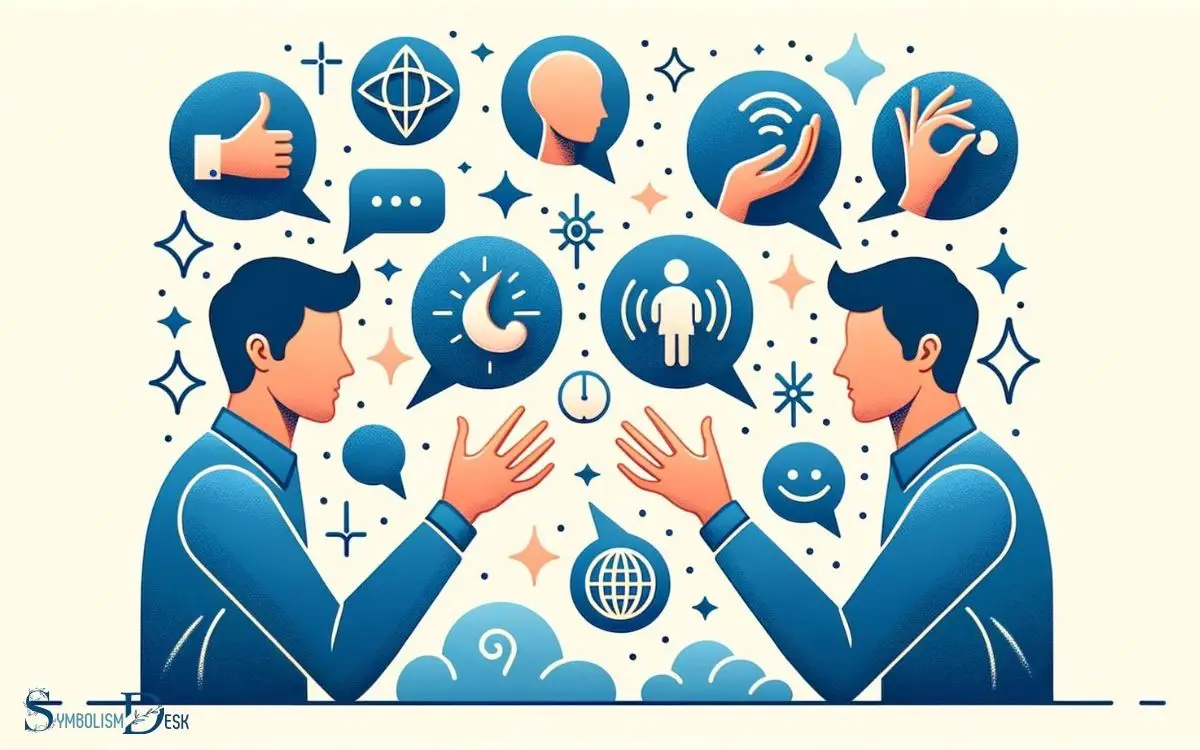What Does Symbolic Interaction Mean? Events!
Symbolic interactionism is a sociological perspective that examines how individuals interact with one another through the use of symbols and shared meanings to create and maintain social realities.
It emphasizes the importance of subjective meanings and the processes by which social actors interpret and respond to each other’s actions.
Symbolic interactionism is grounded in the belief that human behaviors are not just reactions to external stimuli, but are instead guided by the meanings that individuals ascribe to things, events, and behaviors.
These meanings are derived from social interaction and modified through interpretation.
Key concepts include:
- Symbols: Anything that carries a particular meaning recognized by people who share a culture.
- Social Interaction: The process by which we act and react to those around us.
- Interpretation: The process by which we mentally make sense of, and define, our social world.
For example, a wedding ring is a symbol of marital commitment. The meaning of the ring, which is shared and understood within the culture, influences how people interact with someone who wears it.
Exploring symbolic interactionism unveils the nuanced ways in which shared symbols and meanings influence human behavior and societal structures.

Key Takeaway
Origins of Symbolic Interaction
The origins of symbolic interaction can be traced back to the work of sociologists George Herbert Mead and Charles Horton Cooley in the late 19th and early 20th centuries. This sociological perspective focuses on the symbolic meanings that underlie social interactions.
Mead’s theory emphasized the importance of symbols and language in the development of the self, emphasizing that individuals interpret and give meaning to symbols in their interactions with others.
Cooley, on the other hand, introduced the concept of the ‘looking-glass self,’ which suggests that a person’s self-concept is shaped by their understanding of how others perceive them.
These foundational ideas laid the groundwork for the study of symbolic interactionism, which continues to be influential in understanding the complexities of human interaction and communication.
Core Concepts and Principles
An essential concept within symbolic interactionism is the idea of social construction, which emphasizes the role of language and symbols in shaping individuals’ understanding of reality and their interactions with others.
This perspective highlights how meanings are created and negotiated through interaction, and how these meanings can vary across different social and cultural contexts.
The following table provides a summary of core concepts and principles within symbolic interactionism:
| Core Concept | Description |
|---|---|
| Symbols | Refers to objects, words, gestures, or images that represent a shared meaning within a society. |
| Self | Involves the ability of individuals to reflect on themselves from the perspective of others. |
| Interaction | Focuses on the ongoing process of communication and negotiation of meanings in social interactions. |
| Identity | Involves the development of a sense of self through interactions with others. |
Understanding these core concepts is crucial for comprehending the dynamics of symbolic interactionism in society.
Symbolic Interactionism in Society
Symbolic interactionism emphasizes the role of social construction and the negotiation of meanings in shaping individuals’ interactions within society.
This theoretical framework highlights how people create and interpret symbols to communicate and make sense of the world around them.
In society, symbolic interactionism is evident in various aspects such as language, norms, and values. It influences how individuals perceive and respond to societal expectations, roles, and identities.
Through the lens of symbolic interactionism, social institutions and structures are seen as products of ongoing symbolic interactions.
This perspective underscores the significance of shared symbols and collective meanings in shaping social order and individual behavior.
It provides a nuanced understanding of how society functions and evolves through the continuous interpretation and reinterpretation of symbols within social interactions.
Role of Symbols and Meanings
In social interactions, symbols and meanings play a crucial role in shaping individuals’ perceptions and behaviors.
Symbolic interactionism asserts that people act toward things based on the meaning those things have for them, and these meanings are derived from social interaction and modified through interpretation. Understanding symbolic meaning is essential for comprehending how individuals navigate their social world and make sense of their experiences. This perspective emphasizes the importance of language, symbols, and gestures in shaping human behavior and interaction. By recognizing the significance of these symbolic elements, researchers can gain insights into the social construction of reality and the dynamics of interpersonal relationships.
Symbols, such as language, gestures, and objects, convey shared meanings within a society or culture, influencing how individuals perceive and respond to the world around them.
Meanings attached to symbols are not inherent but are socially constructed, and individuals negotiate and interpret these meanings through their interactions with others.
These interpretations then guide their behaviors and the way they navigate their social environment. Understanding the role of symbols and meanings provides insight into the complexities of human interaction and social dynamics.
This understanding of symbols and meanings has significant applications in everyday interactions.
Can Symbolic Speech and Symbolic Interaction be Related in Events and Actions?
In events and actions, symbolic speech and symbolic interaction can be related. Symbolic speech actions explained can help convey messages, values, or beliefs without words. Through gestures, rituals, or behaviors, individuals can express meaning and create shared understandings within social interactions.
Application in Everyday Interactions
Symbols and meanings derived from social interactions have practical applications in everyday interactions, shaping individuals’ perceptions and behaviors.
In daily life, individuals use symbols to convey meaning, interpret situations, and guide their actions.
For example, a simple gesture like a smile can symbolize friendliness, leading to a positive interaction. Conversely, a frown may signal displeasure, influencing the course of a conversation.
Moreover, the use of language, such as choosing specific words or phrases, can carry underlying meanings that impact how a message is received.
Understanding symbolic interaction allows individuals to navigate social interactions more effectively, recognizing the nuanced meanings behind gestures, language, and expressions.
This awareness can enhance communication, facilitate smoother interactions, and contribute to the formation of meaningful connections in various social contexts.
Conclusion
Symbolic interactionism is a theoretical framework that emphasizes the importance of symbols and meanings in shaping individual behavior and social interactions.
By examining the origins, core concepts, and role of symbols in society, it becomes evident that symbolic interactionism provides a rich understanding of human communication and interaction.
Its application in everyday interactions highlights the intricate ways in which symbols and meanings influence our social reality.






